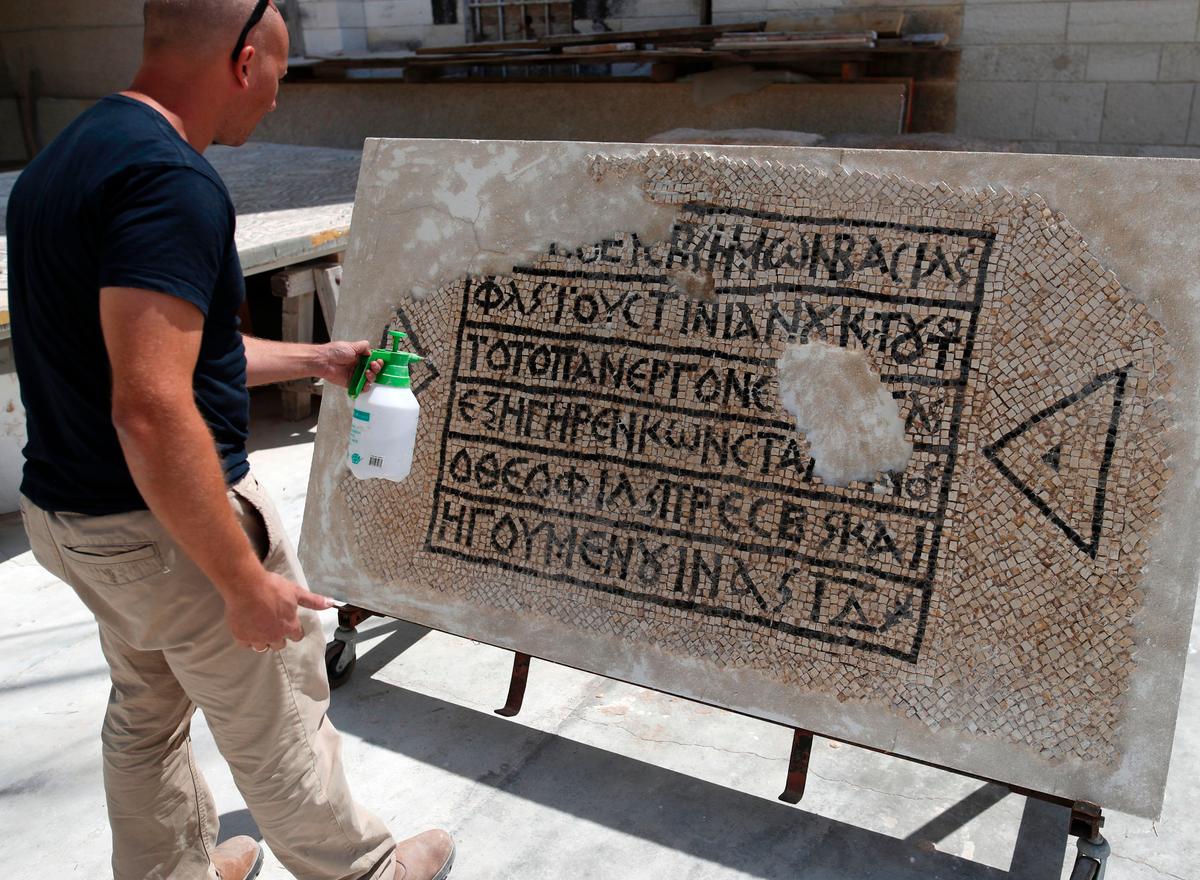A 1,500-year-old mosaic floor with a Greek inscription has been uncovered during works to install communications cables in Jerusalem’s Old City - a rare discovery of an ancient relic and an historic document in one.
The inscription cites 6th-century Roman emperor Justinian as well as Constantine, who served as abbot of a church founded by Justinian in Jerusalem. Archaeologists believe it will help them to understand Justinian’s building projects in the city.
The full inscription reads: “The most pious Roman emperor Flavius Justinian and the most God-loving priest and abbot, Constantine, erected the building in which (this mosaic) sat during the 14th indiction.”

An archaeologist works on part of a 1,500-year-old mosaic floor bearing the names of Byzantine Emperor Justinian, at the Rockefeller Museum in Jerusalem, on August 23, 2017, after they unearth a portion of ancient mosaic near the city's Damascus Gate.
AHMAD GHARABLI/AFP/Getty Images
AHMAD GHARABLI/AFP/Getty Images





